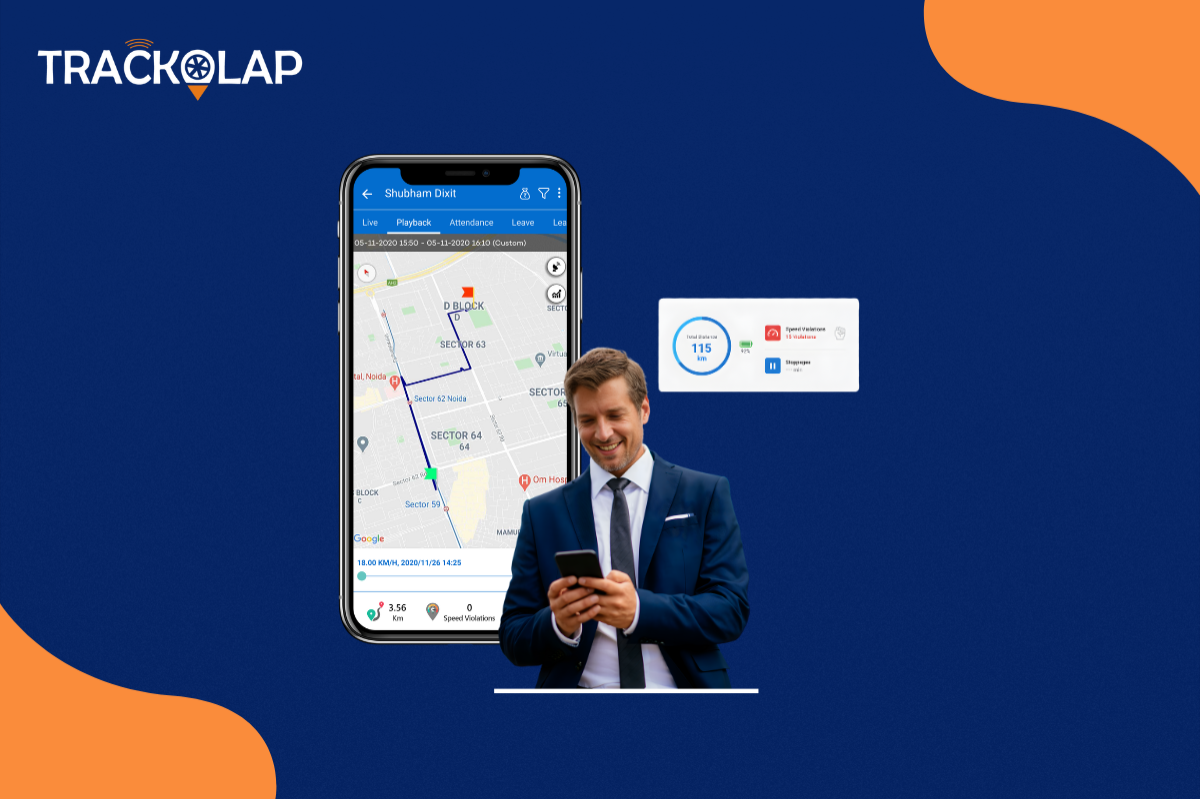
How To Boost Productivity in the Media and Entertainment Industry
Step into the electrifying world of the media industry, where every second counts, and creativity knows no bounds. In this realm of flashing cameras, breaking news, and captivating stories, one thing reigns supreme: productivity.
Whether you're an ink-stained journalist chasing leads, a digital wizard conjuring viral videos, or a master editor weaving together narratives, your productivity prowess can make the difference between a lackluster production and a show-stopping masterpiece.
Get ready to dive into the vortex of innovative techniques that will supercharge your efficiency without skimping on quality. From cracking the code of inspired brainstorming sessions to unraveling the secret to fluid team collaborations, this guide is your backstage pass to mastering Employee productivity Software in media.
How To Boost Productivity in the Media and Entertainment Industry
In the intricate and multifaceted realm of media and entertainment, where the fusion of creative ingenuity and stringent timelines is the norm, the quest for enhanced productivity emerges as an indisputable imperative. Whether your role involves cinematic storytelling, musical composition, marketing, or orchestrating spectacular events, the pursuit of optimizing productivity stands as a defining principle for navigating the ever-evolving landscape. Below, we elaborate on a comprehensive and strategic framework tailored to amplify efficiency within the dynamic arena of media and entertainment.
Strategize with Precision:
Commencing your journey towards heightened productivity necessitates strategic groundwork. Start by delineating well-defined objectives for your project. Create a comprehensive project scope that outlines the intricate details of your endeavor, from creative vision to logistical requisites. Break down overarching objectives into manageable micro-goals that serve as actionable checkpoints.
Concurrently, establish pragmatic timelines that encompass pre-production, production, and post-production phases. This structured approach provides a clear roadmap, ensuring the cohesive alignment of creative aspirations with tangible deliverables.
Leverage Cutting-Edge Tools:
The contemporary media and entertainment landscape thrives on the prowess of cutting-edge technological solutions. TrackOlap offers a comprehensive solution for efficient task assignment and project management Software. With the ability to effor tlessly allocate tasks on a daily, weekly, or monthly basis, individual team members gain clear accountability, enhancing overall productivity.
Additionally, it aids in project management by providing insights into the total project cost, enabling informed decisions to reduce expenses. The integrated timesheet functionality offers accurate data that educates remote team managers about the productivity and efficiency of each team member.
Furthermore, the software's capability to track project hours in real-time ensures that every minute and second dedicated by an employee to complete a project is precisely calculated. This holistic approach empowers organizations to optimize resource allocation, streamline processes, and maximize project outcomes.
Optimize Time Allocation:
The art of productivity is intrinsically linked to the effective allocation of time. Employ the principle of time blocking to segment your workdays into focused intervals dedicated to specific tasks. This technique encourages sustained concentration by reducing the cognitive load of frequent task-switching.
Dedicate each block to a designated task, be it content creation, editing, or strategic planning. Within each block, practice deep work – a state of undistracted engagement with a single task – for sustained periods. By adhering to this practice, you harness peak cognitive efficiency and elevate productivity.
To optimize your time time-tracking tools will work as day savers.
● Assign specific time blocks to tasks for focused work.
● Gain insights into time distribution and identify inefficiencies.
● Analyze data for informed workflow adjustments.
● Foster accountability and minimize distractions.
● Optimize time allocation based on tracking analysis.
● Use data to estimate future project timelines.
● Maintain balance by understanding work patterns.
● Gauge productivity using tracked metrics.
● Record billable hours transparently for client trust.
● Analyze data for ongoing productivity enhancements
Facilitate Seamless Collaboration:
Recognizing the collaborative ethos intrinsic to the industry, the facilitation of seamless teamwork is paramount. Employ collaborative platforms to nurture fluid communication, efficient task delegation, and project alignment. Utilize the features inherent in these tools, such as task assignments, progress tracking, and shared document repositories. Regular team sync-ups and cross-functional collaboration sessions are vital to ensuring that each facet of a project dovetails harmoniously.
Delegation for Impact:
knowledge that productivity extends beyond personal capacities and encompasses effective resource allocation. Identify and delegate tasks that align with the strengths of colleagues, collaborators, or external professionals. Delegation optimizes output by capitalizing on specialized skill sets. Establish clear communication channels, provide comprehensive briefs, and foster an environment conducive to clarifications and feedback throughout the delegation process.
Discover how can you leverage task management tools:
● Assign tasks to specific team members or collaborators.
● Provide detailed instructions and expectations for the task.
● Set clear deadlines for task completion.
● Specify task priority to guide the allocation of resources.
● Outline task dependencies to ensure seamless workflow.
● Monitor task progress and receive updates in real time with employee tracking software.
● Attach relevant files or resources for task context.
● Engage in task-specific discussions and updates.
● Receive automated notifications for task status changes.
● Easily reassign tasks if necessary.
● Divide complex tasks into subtasks for clarity.
● Provide time estimates for task completion.
● Collaborate on shared documents directly within the tool.
● Add notes or specifications to tasks for clarity.
● Link tasks that are sequentially connected.
● Include review and approval steps for quality control.
● Integrate with other tools for streamlined workflow.
● Categorize tasks for easy organization.
● Create reusable task templates for common processes.
● Monitor task performance and team productivity.
Feedback-Driven Excellence:
Cultivate a culture that values constructive feedback as an invaluable asset for growth. Establish open channels for feedback within your creative ecosystem. Seek insights from peers, mentors, collaborators, and even your audience. Constructive criticism provides fresh perspectives, highlights blind spots, and catalyzes iterative refinement, ultimately elevating the quality and impact of your work.
Streamline Reporting
How much time do you devote to gathering information and creating reports? I believe there is probably too much. Report creation does not have to involve a lot of manual labor thanks to all the tools that are currently available.
The suite of analytics tools from TrackOlap allows you to automatically generate reports on your employee productivity. In a perfect world, you would spend more time gathering data and less time analyzing it.
Embrace a Set of Tools
To complete the various tasks you will need a variety of tools. You can save a ton of time and effort if your tools are integrated. Even better, you can choose tools that can perform several tasks at once to cut down on the quantity you require.
The features of the tools are:
● Task Follow-Up:
Maintaining an efficient workflow requires diligent oversight of assigned tasks. By consistently monitoring task progress , you ensure deadlines are met and your team adheres to established schedules. Task follow-up plays a pivotal role in managing responsibilities and fostering accountability.
● Task Status:
Real-time insights into task status are readily available, whether you're using employee tracking software . This accessibility empowers you to track progress remotely, ensuring that your team members remain aligned with project objectives.
● Efficient Deadline Management:
By closely monitoring task statuses, you proactively identify potential delays. This allows you to intervene and allocate resources as necessary to ensure timely completion, mitigating any negative impact on project timelines.
● Team Accountability:
A task status management tool fosters a culture of accountability. Team members are aware that their progress is being tracked, incentivizing them to stay on course and consistently update their task statuses.
● Overall Project Visibility:
Collective task statuses contribute to a holistic view of project progress. This visibility assists managers in making informed strategic decisions and allocating resources optimally.
● Continuous Improvement:
Analyzing historical task statuses allows you to identify recurring bottlenecks, inefficiencies, or areas for improvement in your workflow. Data-driven insights support the ongoing refinement of processes.
● Task Progress Visualization:
Graphical representations and visual indicators within task-tracking software offer a quick and intuitive way to gauge project health. This visualization simplifies complex information for quick decision-making.
Benefits Of Increasing Productivity In The Media And Entertainment Industry
● Faster Project Completion: Improved productivity leads to faster project completion, allowing for more projects to be undertaken and increasing overall output.
● Optimized Resource Utilization: Enhanced efficiency ensures that resources such as time, budget, and manpower are utilized to their fullest potential.
● Meeting Deadlines: Consistently meeting deadlines builds trust with clients, stakeholders, and audiences, enhancing the industry's reputation.
● Competitive Advantage: Higher productivity can set you apart from competitors by enabling you to deliver superior content faster and more consistently.
● Cost Savings: Efficient workflows reduce wastage of resources, leading to cost savings in terms of time, labor, and materials.
● Adaptability: A more productive team can adapt to market trends and shifts more effectively, ensuring relevancy in a fast-changing industry.
● Improved Work-Life Balance: Enhanced productivity can lead to shorter work hours and reduced overtime, contributing to a better work-life balance for employees.
● Enhanced Collaboration: Streamlined processes and effective use of tools facilitate seamless collaboration among team members, leading to better outcomes.
● Effective Project Management: Increased productivity often involves better project management practices, ensuring that projects stay organized and on track.
● Client Satisfaction: Delivering high-quality work on time increases client satisfaction and fosters long-term relationships.
● Capacity for Larger Projects: Higher productivity enables teams to take on larger and more ambitious projects, expanding opportunities for growth.
Final Words!
Elevating productivity in the media industry necessitates harnessing technology, nurturing innovation through collaboration, and placing a premium on employee well-being. By integrating cutting-edge productivity tools like TrackOlap, workflows can be streamlined, and data-driven insights harnessed for better decision-making.
To supercharge your media endeavors, explore the potential of TrackOlap's solutions today . Embrace collaboration, embrace technology, and cultivate a culture of efficiency to flourish in the ever-changing media landscape.






























 Back to Blogs
Back to Blogs










 D-5 Sector-59, Noida, Uttar Pradesh (India)
D-5 Sector-59, Noida, Uttar Pradesh (India) contactus@trackolap.com
contactus@trackolap.com 7011494501
7011494501










